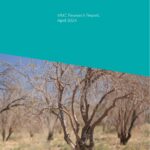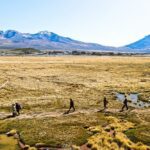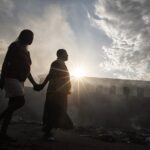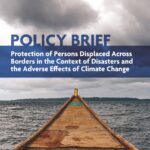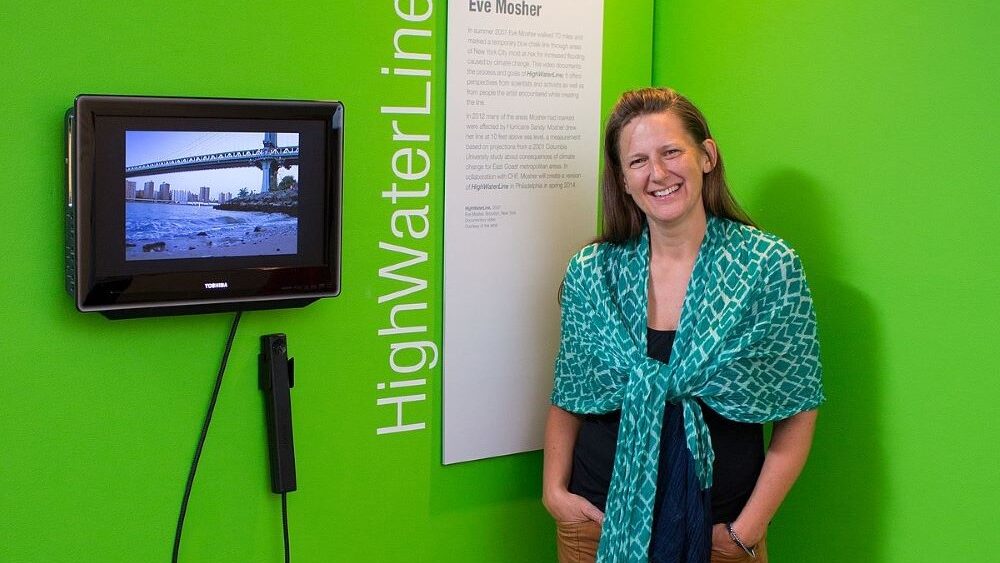PDD Secretariat: Is the Global Compact on Refugees relevant in addressing disaster displacement?
The authors: While disaster displacement is mainly addressed by the Global Compact for Migration, the Global Compact on Refugees, which was affirmed by the UN General Assembly in 2018, complements it by recognizing that disasters and the effects of climate change are linked to drivers of refugee movements. It highlights the need to address gaps in protection and calls for guidance and support to manage protection and humanitarian challenges, including for persons displaced in disaster contexts. So even though it does not explicitly mention climate change, the Compact does offer useful ways how States can address the protection and humanitarian assistance needs of disaster displaced persons.
PDD Secretariat: Does this mean the GCR recognizes the concept of “climate refugees”?
The authors: No, as explained many times over the concept of “climate refugees” is considered misleading and has no legal basis. The main reason is that disasters and the effects of climate change alone do not amount to persecution, which, according to the 1951 Refugee Convention, involves the threat of harm or suffering inflicted for reasons such as race, religion, nationality, membership in a particular social group, or political opinion.
However, it is increasingly recognized that persecution may occur in disaster and climate change-related contexts. For example, people might have a well-founded fear of persecution if they would face detention, torture or death when protesting against a government’s inadequate disaster response. Persecution might also arise if a person is denied access to humanitarian assistance during a disaster because, for instance, they belong to a religious or ethnic community or an opposition party. In addition to such scenarios, disasters and climate change can also amplify the vulnerabilities of people already targeted during armed conflict or similar situations. Therefore, even though “climate refugees” is not a legally recognized term and should not be used, we argue that it is essential to carefully assess claims for international protection even if people flee in contexts of disasters and climate change.
PDD Secretariat: And are disaster and climate change impacts considered in international protection claims?
The authors: Yes and no. Yes, in that some countries have taken disaster and climate change-related factors into account in their decisions. An example of this is that New Zealand’s Refugee Status Appeals Authority granted refugee status to an activist who coordinated an opposition party’s disaster response in Myanmar. Also, the Immigration and Protection Tribunal recognized that environmental issues linked with armed conflict can be grounds for international protection.
On the other hand, no, because this is not universally done. Environmental factors should be included more consistently in decisions, particularly when assessing whether asylum can be refused because asylum seekers would have a so-called internal flight alternative. This involves determining if there is a geographical area within their home country where they could find safety and a dignified life instead of seeking international protection abroad. This practice could build on previous cases, such as when a Norwegian court in 2011 determined that a region in Somalia, despite not being affected by armed conflict, was unacceptable as an internal flight alternative due to severe drought and a humanitarian crisis.
PDD Secretariat: What about regional refugee law? Can that play a role in addressing disaster displacement alongside international protection?
The authors: Yes, at least to some degree! It does so by expanding the refugee definition of the 1951 Convention. The OAU African Refugee Convention and the Cartagena Declaration include references to events or circumstances “seriously disturbing public order” as grounds for protection. So far, in practice, the application of this notion has been limited to situations where disasters and the adverse effects of climate change interact with conflict and violence, leading to a breakdown of law and order. This was the case, for example, during the 2011-2012 drought in Somalia, when Kenya and Ethiopia admitted large numbers of Somalis fleeing famine. However, regional refugee law may also be applicable in scenarios where life-saving humanitarian assistance is unavailable or inaccessible following a disaster. The present 40th anniversary of the Cartagena Declaration provides a unique opportunity to further explore the potential (and limitations) of its application for enhanced protection in climate change and disaster contexts.
PDD Secretariat: What about human rights? Do they also provide protection to disaster displaced persons?
The authors: Yes, human rights law provides an important avenue for protection. As we highlight in the study, human rights law offers what is called “subsidiary” or “complementary protection” for people who may face serious harm if forcibly returned to a country affected by disasters or climate change. This protection is grounded in the human right to life and the prohibition of inhuman and degrading treatment. It applies in situations where individuals could face significant disaster-related risks to their life, extremely poor humanitarian conditions, or severe health issues, all of which could lead to considerable suffering or a reduced life expectancy. For example, in 2019, the Austrian Constitutional Court ruled that authorities must consider disasters such as drought when deciding on granting subsidiary protection, based on the European Convention on Human Rights, regardless of whether a humanitarian crisis is triggered by natural or man-made factors. Thus, human rights law is an important area of law that also applies where international or regional refugee law may not.
PDD Secretariat: In reality, do most people displaced in disaster and climate change contexts benefit from protection under refugee or human rights law?
The authors: In reality, most people displaced in such contexts remain within their country as internally displaced persons. People displaced across borders may be admitted by another country based on humanitarian considerations. such as humanitarian visas, temporary admission, or a temporary protection status, which allow people affected by disasters and climate change to enter and/or stay in a country even if they do not qualify for protection under refugee or human rights law. Such measures are enshrined in migration law. They are particularly common in the Americas, where the immigration laws of countries such as Argentina, Brazil, Canada, Ecuador, El Salvador, Guatemala, Mexico, Paraguay, and Peru contain explicit references to risks associated with disasters to justify granting entry or temporary stay. Moreover, in some regions of the world, people displaced in the context of disasters and climate change may be able to move legally through bilateral and regional free movement agreements. A notable example is the IGAD Free Movement Protocol, which is designed to facilitate mobility across East African countries and includes provisions expressly allowing the entry and stay of disaster-displaced people. It is not yet in force but has great potential as a protection tool for disaster displaced persons. Migration quota schemes, such as those provided by Australia and New Zealand for Pacific Islanders, are another tool that may provide pathways for affected people.
PDD Secretariat: How are these different measures and pathways coordinated?
The authors: The authors: Indeed, a lot of coordination is required among these different tools and mechanisms. That’s why we argue that it is essential to integrate disaster displacement considerations into existing policy and legal frameworks. This involves harmonizing national laws, policies, and operational measures at the regional level. Coordination at the regional level ensures that, despite different approaches by individual States, humanitarian measures and migration pathways are applied systematically and appropriately, tailored to each region’s specific context and in line with the needs of affected persons.
Overall, we found that there are already established practices that can protect people displaced in disaster and climate change contexts. Rather than reinventing the wheel, we argue that the focus should be on enhancing these practices to ensure more comprehensive and effective protection. This includes leveraging the whole ‘toolbox’ available: legal avenues in international and regional refugee law and human rights law while also utilizing humanitarian migration measures and regular migration pathways. Have a look at our study for a more detailed analysis and examples on these opportunities.
Header Photo © IFRC, flooded communities in Dorado do Sul, Brazil, 2024


